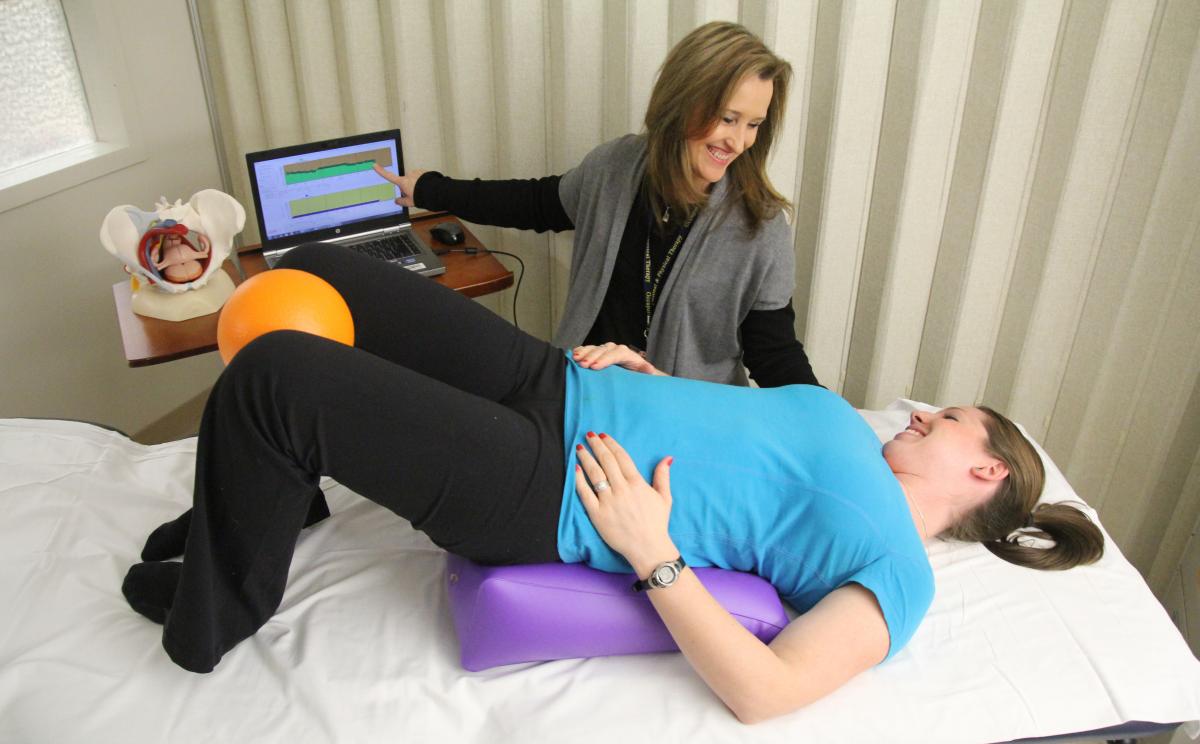Written by Dr. Allison Gentry PT, DPT, CAFS
You know that moment when you need to “go” really badly and you squeeze as hard as you can and rush to the restroom? The muscles that you are “squeezing” make up your pelvic floor. The pelvic floor is located in your pelvis and made up of muscles, connective tissues, and ligaments that support your respective reproductive system, rectum, and bladder. It is also one of the most underrated muscle groups of the human body. Especially if you think about all the fundamental functions it assists you with in your daily life, such as urinating and fecal elimination (number 1 and number 2), assists women with giving birth, and supports organs. That is quite a big responsibility for a small muscle group in the human body.
Physical therapists will often remind you of how important is to “have a strong core” due to the fact it can improve your ability to complete your everyday activities, help reduce low back pain, and increase your strength. Your core includes your rectus abdominis muscles, obliques, transverse abdominis musculature, multifidus (muscle in your back), and the unpopular pelvic floor. The pelvic floor is not always the most fun topic topic to discuss with a healthcare provider. Although it’s an exceptionally common area for dysfunctions in both men and women, and often goes untreated for months or even years because it’s commonly undiscussed! However, like mentioned in our previous blog by Dr. Kelsey Diaz, 3 Things You Didn’t Know Your Physical Therapist Could Do, the pelvic floor is also an area that a physical therapist can easily help you with!
Now you are probably wondering if whatever problem you have going on “down under” is included when we are talking about pelvic floor disorders/dysfunctions. “Pelvic floor disorder” is a nice umbrella term that can mean urinary or fecal incontinence, pelvic organ prolapse, or overactive bladder disorder. However there are also other disorders and signs that you should probably consult a health provider about your pelvic floor, such as painful intercourse, traumatic childbirths, painful urination, and endometriosis. Pelvic floor health is often termed “women’s health” which often leads to the misconception that it’s only for women, and that couldn’t be farther from the truth. Despite the fact that an estimated of one-third of women in the United States suffer from a pelvic floor disorder, it affects men just as much and will often go undetected longer. Regardless of gender, you should stop delaying the conversation with a healthcare provider about your symptoms and start actively seeking a solution!
 Source: ptwfl.com
Source: ptwfl.com
Physical therapy is a route for successful treatment outcomes with less side effects or costs of medication. A physical therapist receives extensive training in regards to the anatomy and physiology in area of pelvic floor, as well as training in rehabilitation, however it is also a growing specialty in the field of physical therapy. You can easily call the outpatient orthopedic clinic you are interested in going to and simply ask if their physical therapists treat the pelvic floor or your specific disorder. You can also find search and locate a specialized women’s health physical therapist near you here.
If you are an individual dealing with “down under” problems and pains, be an advocate for your health and go speak to a health provider, or even your neighborhood physical therapist about what can be done to improve your health! For more information on the pelvis in general, check out Foundations – The Pelvis.
![pelvic-floor[1] pelvic floor muscles](https://www.risephysicaltherapy.com/wp-content/uploads/2023/04/pelvic-floor1.png)


